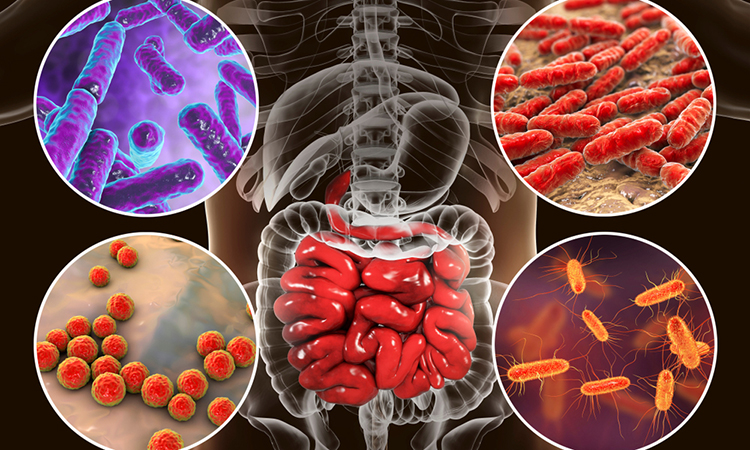Bile acids and the microbiome: revolutionising disease approaches
Posted: 12 March 2024 | Ellen Capon (Drug Target Review) | No comments yet
Thousands of bile acids have been discovered, providing new insights into how microbes influence distant organ systems.


Scientists from the Skaggs School of Pharmacy and Pharmaceutical Sciences at the University of California San Diego have discovered thousands of bile acids. The study’s findings offer new insights into the biochemical language microbes use to influence distant organ systems, which could revolutionise the way researchers approach disease.
Dr Pieter Dorrestein, senior author, professor at the Skaggs School and professor of pharmacology and paediatrics at UC San Diego School of Medicine, stated: “Bile acids are a key component of the language of the gut microbiome, and finding this many new types radically expands our vocabulary for understanding what our gut microbes do and how they do it.”
Originating in the liver, bile acids are stored in the gallbladder and released into the intestine, where they aid digestion. The microbes in the intestine metabolise the bile acids produced by the liver, changing them into an array of different molecules named secondary bile acids which are more easily absorbed by the body. The diversity and range of functions of these secondary bile acids has been greatly underappreciated by researchers until now. Co-author Dr Ipsita Mohanty, a postdoctoral researcher in the Dorrestein lab, commented: “When I started working the lab, there were about a few hundred known bile acids…Now we’ve discovered thousands more, and we’re also working toward realising that these bile acids do so much more than just help with digestion.”
Bile acids are crucial signalling molecules that aid the regulation of the immune system and have essential metabolic functions, like controlling lipid and glucose metabolism. Also, they help to explain how microbes in the gut can influence distant organ systems. Conditions that alter the size or composition of the bile acid pool can trigger alterations in the microbiota composition that exacerbate inflammation or favour infection with opportunistic pathogens.1
Dr Helena Mannochio-Russo, also a postdoctoral researcher in the Dorrestein lab, explained: “Because of their interaction with our microbiome, the influence of bile acids spreads far beyond the digestive system, and so could the diseases we treat with them – the list of diseases related to bile acids is a mile long, and there a several FDA approvals for these kinds of acids as treatments.” For example, bile acid treatments have been effective against SARS-Cov-2 infections. Steroids including bile acids like ursodeoxycholic acid (UDCA) have shown promise for their potential in modulating SARS-CoV-2/host interaction.2
For the study, the team utilised the resources of the Collaborative Microbial Metabolite Center (CMMC), a first of its kind collaboration between UC San Diego and UC Riverside, which Dorrestein is director of. The CMMC gathers information about metabolites that microbes produce so that researchers can gain a better understanding about their impact on human health and the environment.
Dr Dorrestein said: “In other areas of biology like genomics, sharing data is common, but there hasn’t been an infrastructure in place for microbial metabolomics researchers to share data until now…Ultimately these breakthroughs are the result of a convergence of collaboration and computing power, and we expect many more breakthroughs to come out of the CMMC.”
The team debuted a novel tool to instantly match microbes to the metabolites they produce earlier in 2024.3 This current study is the first of potentially many to use the tool for specific types of molecules. Moving forward, the scientists aim to explore the specific functions of the newly discovered bile acids as well as use their approach on other types of biomolecules, such as lipids or other acids.
Dr Dorrestein concluded: “We’re rewriting the textbook of human metabolism…It’s really a remarkable change in our capabilities, and we believe it’s going to revolutionise the way we approach disease.”
This study was published in Cell Reports.
References
1 Baumler AJ, Larabi AB, Masson HLP, et al. Bile acids as modulators of gut microbiota composition and function. Gut Microbes. 2023 February 5 [2024 March 11]; 15(1). Available from: https://www.tandfonline.com/doi/full/10.1080/19490976.2023.2172671
2 Biagoli M, Distrutti E, Fiorucci S, et al. Bile acids and bile activated receptors in the treatment of Covid-19. Biochemical Pharmacology. 2023 December 9 [2024 March 11] Available from: https://doi.org/10.1016/j.bcp.2023.11598
3 Abiead Y, Aiosa N, Antunes E, et al. microbeMAAST: a taxonomically informed mass spectrometry search tool for microbial metabolomics data. Nature Microbiology. 2024 February 5 [2024 March 11]; 9: 336-45. Available from: https://www.nature.com/articles/s41564-023-01575-9
Related topics
Disease Research, Microbiome, Therapeutics
Related organisations
University of California San Diego (UCSD)







